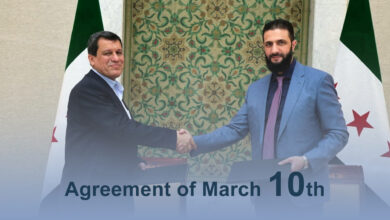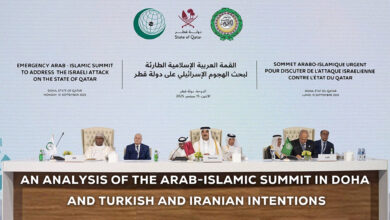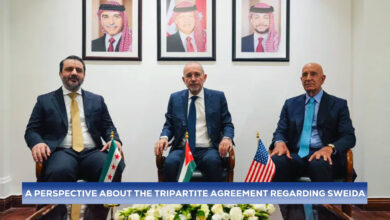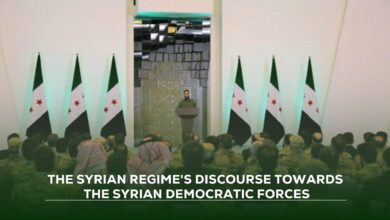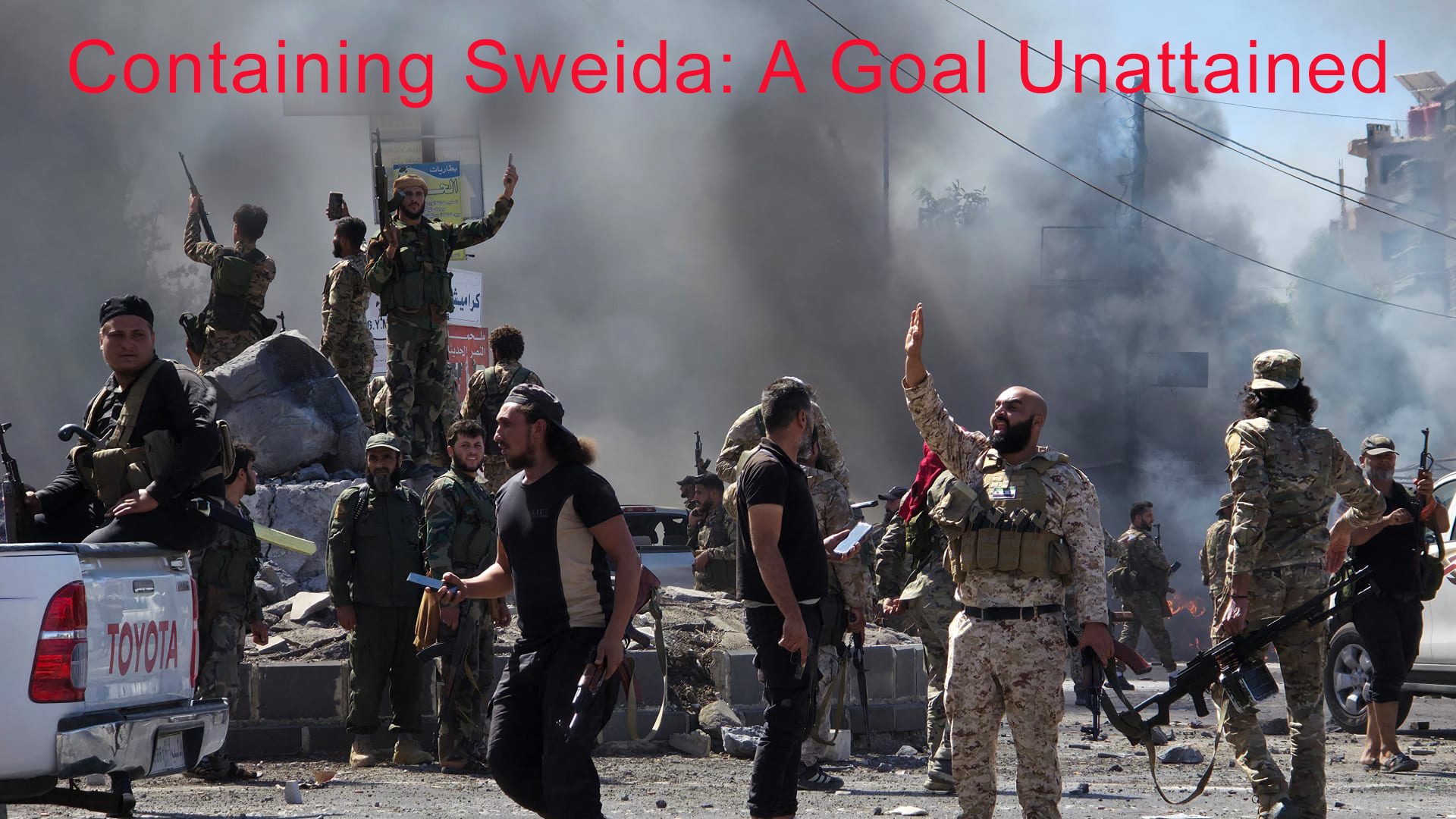
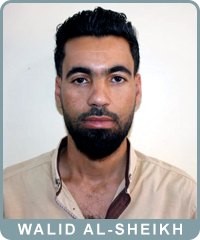 Since the beginning of talk about the post-regime phase in Syria, major questions have emerged about the shape of the new state, the identity of the political system, the means of achieving transitional justice, and to ensure that the tragedies of violence and division are not repeated. This phase was supposed to be a pivotal moment, restoring Syrians’ confidence in politics and opening the door to a new social contract based on citizenship and the exclusive control of arms by the state. However, but the years that followed this promising speech did not lead to that destination. Instead, they opened up the opposite horizon, with the presence of weapons outside the state increased, and violations occurred no less horrific than those that preceded the “Victory Conference” phase.
Since the beginning of talk about the post-regime phase in Syria, major questions have emerged about the shape of the new state, the identity of the political system, the means of achieving transitional justice, and to ensure that the tragedies of violence and division are not repeated. This phase was supposed to be a pivotal moment, restoring Syrians’ confidence in politics and opening the door to a new social contract based on citizenship and the exclusive control of arms by the state. However, but the years that followed this promising speech did not lead to that destination. Instead, they opened up the opposite horizon, with the presence of weapons outside the state increased, and violations occurred no less horrific than those that preceded the “Victory Conference” phase.
This conference was supposed to establish a phase for the state’s recovery, but it turned into a formal event that did not lead to the rebuilding of institutions or the real disarmament of armed groups. What actually happened it is a repositioning of the same forces under new labels. The security structure remained fragile and loyalties divided, and factions were reproduced under different names. The tools of oppression and exclusion remained in place, and if its speech change slightly.
Costal region experience, in this context, seemed more like a repetition of a familiar scenario: widespread violations at the hands of factions considered part of the state or local networks of influence, followed by formal attempts at calm through investigative committees and promises to hold the perpetrators accountable. But the victims’ memories were greater than the state’s ability to turn the page. There was no real accountability, and no change in the mechanisms for dealing with the population, leaving these areas to simmer beneath the surface and become silent spaces for symbolic and social violence.
Today, the picture is back in Sweida Governorate, but with more complex contradictions. This governorate was not involved in the armed conflict as in other regions, nor was it completely subject to the regime-opposition equation. Rather, it maintained a degree of political and social neutrality, based on a long history of independence and sectarian specificity. However, it was not immune to the general collapse that afflicted the state structure. Institutions disintegrated, local armed networks expanded, and intertwined interests between clans, religion, arms, and the economy.
What we are witnessing today is not merely a security breakdown, but rather it is a clear expression of the state’s failure to understand the nature of this geography and to manage sectarian and political diversity within a logic befitting a state claiming sovereignty. Violence in Sweida is fueled by a general enviromental in which the speech of revenge intertwines with narratives of dignity, and in which the sectarian dimension is employed to justify weapons and violations, while the state is absent or intervenes when the chaos continues its course.
Most dangerously, all of this is taking place in a highly tense regional enviromental. Israel, which has long been a cautious player on the southern front, has begun to declare its positions more openly. Its threats are no longer limited to military deterrence; they now carry a political component, embodied in the demand for the demilitarization of southern Syria, under the pretext of protecting its borders. This demand does not appear isolated from an internal discourse that has begun to grow in Sweida itself, where there are growing calls to establish “Autonomous-administration” models or entities that protect “privacy” and propose visions separate from the center.
This indirect convergence between the Israeli demand and some local speech does not necessarily reflect coordination, but rather points to a political vacuum being filled by multiple projects, in the absence of a comprehensive national project that guarantees justice, participation, and dignity for the population, and is based on the state as a legal institution, rather than a collection of security agencies or auxiliary militias.
The state, as the Sweida scene demonstrates, is no longer a guarantor of security and stability. Rather, it has become a party that deals selectively with violence, overlooking violations when silence serves its interests and intervening with excessive violence when it perceives certain movements as a threat to its prestige, even at the expense of civilian lives. What exacerbates the danger is that the logic of security control no longer relies on the law, but rather on tools of sectarianism, revenge, and bloody deterrence—tools that drag society toward further division and fragmentation.
The failure to contain Sweida is not only due to the imbalance of power, but also to the lack of a clear political vision for southern Syria. The state has made no real effort to understand the social structure there, nor has it offered any serious initiatives to address the underlying causes of tension. It has also failed to invest in development or restore the population’s confidence. Instead, it has continued to treat the region as a security situation that can be managed through temporary settlements or plunged into internal conflicts.
Its seems that there is no real intention to build a healthy relationship between the state and this geography. All approaches adopted so far have ranged from threats to indifference, from harshness in dealing with dissenters to leniency in the face of gangs or kidnapping networks. This reflects a profound flaw in the understanding of the state and in its conception of how to manage diversity and the tensions within it.
Sweida today stands at a crucial crossroads. Either it becomes an open arena for all fleeting projects, from internal revenge to foreign intervention, or it begins practical steps toward a new decade, founded on respecting the will of the population, dismantling armed networks, and presenting a socio-political approach befitting this ancient geography. Continuing with current policies will only lead to more violence and, not containment, to disintegration.
Therefore, the goal of “containing Sweida” remains elusive, because the tools to achieve it have not yet been developed, and because those in charge still view it as a space for control, not as a partner in the nation, and its security as a secondary concern, not a pillar of national stability.
The continued inability to contain Sweida province should not be read as an isolated local failure, but rather as a wake-up call for all of Syria. What is happening there represents a condensed example of the crisis in the relationship between state and society, and reveals the deepening gap between the central authority and the needs of people in the peripheries. When the state becomes an emergency actor in the lives of its citizens, offering them nothing but rhetoric or repression, it leaves the door open to all sorts of alternative projects, from sectarianism to secession, from foreign intervention to self-inflicted chaos.
To prevent the goal of “containing Sweida” from remaining a distant dream, the relationship with southern Syria must be reshaped beyond traditional security control tools. The solution will not come from armored vehicles entering to impose stability, but rather from a genuine social contract in which residents feel they are partners in decision-making and destiny, and that their rights cannot be traded for the quiet of arms.
As mentioned above, three pivotal points emerge as an entry point for any effective strategy:
First, the illegitimate armed structure must be dismantled, not through violent confrontation, but rather through gradual integration based on dismantling the reasons for its existence: economic marginalization, the absence of justice, and the loss of trust.
Second, Sweida needs a new speech that views it not as a “Druze fortress” or a “soft underbelly,” but rather as an integral part of the nation, with its own concerns, demands, and dignity. The state must listen, not be apprehensive.
Third, the authorities in Damascus must abandon their policies of sectarian and regional exploitation and recognize that the continuation of division poses a threat to its very survival. A state that lacks the courage to be open and honest will not be able to continue.
Containing Sweida is not an impossible goal, but it requires a political decision that moves from the logic of oppression to the logic of partnership. If this denial continues, the south will not remain silent for long, nor will it be isolated from the coming transformations within the nation.
The current moment does not allow for theoretical luxury. Either Syria is built on new strcture of pluralism and justice, or it is eroded piece by piece, while the state continues its withdrawal from geography, until it finds itself a stranger in its own capital
